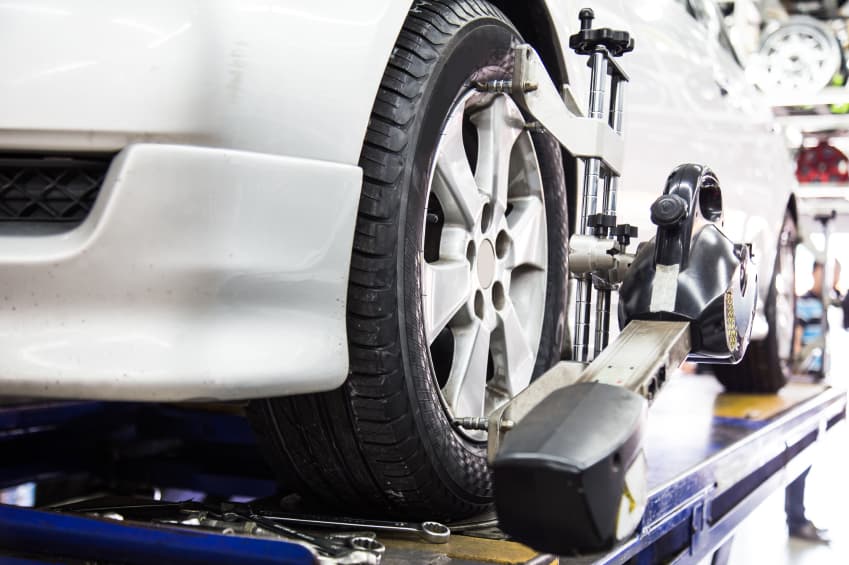
June 27, 2025
How Long Does a Spare Tire Last
Picture this: you're cruising down the highway, heading to work or a weekend getaway, when you hear the unmistakable thump of a flat tire. Thankfully, you have a spare in the trunk. With a little effort, you're back on the road—but now what? How long can you really rely on that spare? Many drivers don’t realize that not all spare tires are created equal. From compact donuts to full-size spares, each type has its own purpose, limitations, and shelf life. Understanding what’s in your trunk—and how long it can safely carry you—can make all the difference between getting to safety and risking further damage or danger.
Understanding the Different Types of Spare Tires
Modern vehicles typically come equipped with one of three spare tire options:
- Donut spares: Compact temporary spares are by far the most common. These are smaller, lightweight tires designed to save space and weight. They’re built for emergency use only and not meant to be driven on for long distances or at high speeds.
- Full-size spare tires: These are the same size as your regular tires. While they can provide a more seamless driving experience, they still require maintenance. If ignored, they can age and degrade just like any other tire.
- Run-flat tires: Technically not spare tires, but rather tires designed to remain functional for a limited distance after a puncture. These give you more flexibility, but they also come with their own limitations and repair considerations.
How Long Does a Spare Tire Last?
If you’re wondering how long does a spare tire last, the answer depends heavily on the type of spare and how well it’s maintained. Donut spares are only intended for short-term use—typically no more than 50 to 70 miles, and at speeds below 50 mph. Their small size and limited tread mean they can’t handle extended driving or harsh conditions. Exceeding these limits can compromise vehicle safety and handling.
Full-size spare tires offer more longevity, but that doesn't mean they last forever. If kept properly inflated and rotated, they can match the lifespan of your regular tires. However, many full-size spares are forgotten and left untouched in the trunk for years. Even if never used, the rubber in tires degrades over time due to heat, moisture, and air exposure. A full-size spare that’s more than six years old should be closely inspected, and most tire manufacturers recommend tire replacement—used or not—after 10 years.
Storage conditions also matter. A spare kept in a hot, damp trunk or exposed to the elements underneath a truck can wear down even without being driven on. That’s why it’s essential to periodically inspect your spare’s tread depth, rubber integrity, and air pressure—even if it’s never seen the road.
How Far and How Long Can You Drive on a Spare Tire?
It’s a common question during emergencies: how long can you drive on a spare tire or how far can you drive on a spare tire? For donut spares, the answer is crystal clear: stick to under 70 miles and don’t exceed 50 mph. These tires aren’t designed to handle full-time road duties.
Full-size spares offer more range and speed flexibility, but you still need to factor in their condition. It's not just about how far you can go but how safely you can do it. Pushing a worn-out or improperly inflated spare too far can lead to blowouts or uneven tire wear, putting your vehicle and passengers at risk.
Spare Tire Maintenance and Safety Tips
Keeping your spare tire in road-ready condition is just as important as maintaining the ones you drive on every day. Here a few spare tip maintenance safety tips:
- Check your spare’s air pressure at least once a month. Underinflated spares can be useless in an emergency and dangerous if driven on.
- Inspect the tread and rubber condition regularly. Look for cracks, dry rot, or uneven wear. These signs indicate your spare might not be safe to use, even if it appears intact at a glance.
- If your vehicle has a full-size spare, include it in your regular tire rotation schedule. This helps ensure even wear and keeps it functional for longer.
When to Replace or Service Your Spare Tire
Like any other part of your vehicle, your spare tire needs attention and care. A good rule of thumb is to have your spare inspected every time you bring your vehicle in for routine maintenance. Most auto shops will do this as part of a standard service, and it gives you peace of mind knowing your backup plan is in working order.
Don’t wait until you're stranded to figure out your spare isn’t roadworthy. Bring your vehicle in for a tire inspection or replacement today.
Your spare tire is a crucial part of your vehicle’s emergency toolkit—but it’s not a long-term solution. Whether you’re dealing with a donut or a full-size backup, each has specific limits in both distance and longevity. Understanding how long a spare tire lasts, as well as how far and how long you can drive on a spare tire, is essential to staying safe on the road.
Be proactive with tire maintenance. Don’t wait for a flat to check your spare’s condition. Schedule a tire service or inspection at your nearest Meineke location today and ensure you're truly prepared for whatever the road throws your way.



